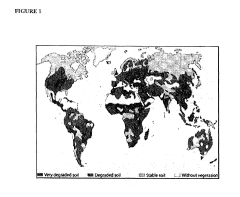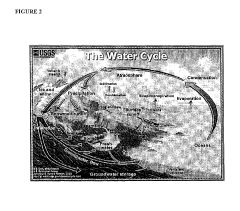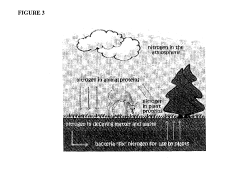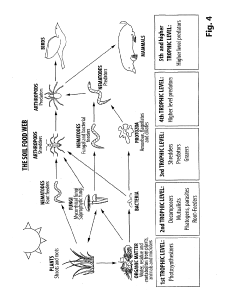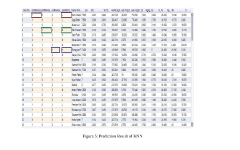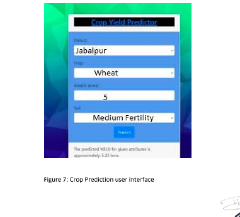How to Achieve Balanced Nutrient Cycling in Alluvial Fields
SEP 23, 202510 MIN READ
Generate Your Research Report Instantly with AI Agent
Patsnap Eureka helps you evaluate technical feasibility & market potential.
Alluvial Nutrient Cycling Background and Objectives
Alluvial soils, formed through the deposition of sediments by flowing water, represent some of the most agriculturally productive lands worldwide. The historical significance of these regions cannot be overstated, with civilizations like ancient Egypt, Mesopotamia, and the Indus Valley developing around alluvial plains due to their inherent fertility. Over time, traditional farming practices in these regions evolved to work in harmony with natural flooding cycles that replenished nutrients, creating sustainable agricultural systems that thrived for millennia.
In recent decades, however, modern agricultural intensification has disrupted these natural nutrient cycling processes. The implementation of dams, irrigation systems, and flood control measures has altered hydrological regimes, while increased use of synthetic fertilizers has created imbalances in soil chemistry. These changes have led to numerous challenges including nutrient leaching, soil degradation, water pollution, and declining crop productivity despite increased input costs.
The concept of balanced nutrient cycling in alluvial fields refers to the establishment of agricultural systems that optimize the flow of essential elements like nitrogen, phosphorus, potassium, and micronutrients through the soil-plant-water continuum. This balance aims to minimize external inputs while maximizing nutrient use efficiency, reducing environmental impacts, and maintaining or improving soil health and crop yields over time.
Current research indicates that achieving this balance requires an integrated approach that combines modern scientific understanding with ecological principles. Key areas of focus include optimizing the timing and quantity of nutrient applications, enhancing soil organic matter content, promoting beneficial soil microbial communities, and implementing precision agriculture techniques that account for the spatial variability inherent in alluvial landscapes.
The primary objective of this technical research is to develop comprehensive strategies for restoring and maintaining balanced nutrient cycling in alluvial agricultural systems. Specifically, we aim to identify practical, scalable approaches that can be implemented across diverse geographical and socioeconomic contexts, from smallholder farms in developing regions to large-scale commercial operations in industrialized countries.
Secondary objectives include quantifying the economic and environmental benefits of balanced nutrient cycling systems, developing monitoring tools and indicators for assessing nutrient cycling efficiency, and creating decision support frameworks that can guide farmers and policymakers in implementing appropriate management practices. By addressing these objectives, we seek to contribute to the development of more sustainable and resilient agricultural systems in alluvial regions worldwide.
In recent decades, however, modern agricultural intensification has disrupted these natural nutrient cycling processes. The implementation of dams, irrigation systems, and flood control measures has altered hydrological regimes, while increased use of synthetic fertilizers has created imbalances in soil chemistry. These changes have led to numerous challenges including nutrient leaching, soil degradation, water pollution, and declining crop productivity despite increased input costs.
The concept of balanced nutrient cycling in alluvial fields refers to the establishment of agricultural systems that optimize the flow of essential elements like nitrogen, phosphorus, potassium, and micronutrients through the soil-plant-water continuum. This balance aims to minimize external inputs while maximizing nutrient use efficiency, reducing environmental impacts, and maintaining or improving soil health and crop yields over time.
Current research indicates that achieving this balance requires an integrated approach that combines modern scientific understanding with ecological principles. Key areas of focus include optimizing the timing and quantity of nutrient applications, enhancing soil organic matter content, promoting beneficial soil microbial communities, and implementing precision agriculture techniques that account for the spatial variability inherent in alluvial landscapes.
The primary objective of this technical research is to develop comprehensive strategies for restoring and maintaining balanced nutrient cycling in alluvial agricultural systems. Specifically, we aim to identify practical, scalable approaches that can be implemented across diverse geographical and socioeconomic contexts, from smallholder farms in developing regions to large-scale commercial operations in industrialized countries.
Secondary objectives include quantifying the economic and environmental benefits of balanced nutrient cycling systems, developing monitoring tools and indicators for assessing nutrient cycling efficiency, and creating decision support frameworks that can guide farmers and policymakers in implementing appropriate management practices. By addressing these objectives, we seek to contribute to the development of more sustainable and resilient agricultural systems in alluvial regions worldwide.
Market Analysis of Sustainable Agricultural Practices
The sustainable agriculture market has witnessed significant growth over the past decade, driven by increasing environmental concerns, consumer demand for organic products, and governmental policies promoting sustainable farming practices. The global sustainable agriculture market was valued at approximately $12.9 billion in 2022 and is projected to reach $26.5 billion by 2030, growing at a CAGR of 9.4% during the forecast period.
Nutrient cycling practices in alluvial fields represent a crucial segment within this market. Alluvial soils, characterized by their high fertility and proximity to water bodies, are prime agricultural lands that benefit significantly from sustainable management approaches. The market for technologies and practices specifically designed for balanced nutrient cycling in these fields is estimated to be worth $3.2 billion globally.
Consumer demand for sustainably grown crops has been a major market driver. According to recent surveys, 73% of consumers express willingness to pay premium prices for products grown using sustainable practices, including proper nutrient management. This consumer preference has created a robust market pull for farmers to adopt balanced nutrient cycling methods.
The agricultural input sector has responded to this demand by developing specialized products for alluvial field management. Biofertilizers designed specifically for nutrient cycling have seen a 15% annual growth rate since 2018. Similarly, soil testing services focused on nutrient balance assessment have expanded by 22% annually over the same period.
Regionally, North America and Europe lead in the adoption of sustainable nutrient cycling practices, accounting for 58% of the global market. However, the Asia-Pacific region, particularly India and China with their extensive alluvial plains, represents the fastest-growing market with a 12.7% annual growth rate.
Government policies and subsidies have significantly influenced market dynamics. Countries with strong environmental regulations and agricultural subsidies tied to sustainable practices have seen 30-40% higher adoption rates of balanced nutrient cycling technologies compared to regions without such incentives.
The competitive landscape includes both established agricultural input companies and innovative startups. Major agricultural corporations have allocated an average of 18% of their R&D budgets to sustainable nutrient management solutions, while venture capital investment in startups focusing on this area reached $870 million in 2022, a 34% increase from the previous year.
Return on investment for farmers implementing balanced nutrient cycling in alluvial fields varies by crop type and region but averages 15-20% higher than conventional methods when accounting for reduced input costs, premium pricing, and long-term soil health benefits. This favorable economic outcome continues to drive market expansion and technological innovation in the sector.
Nutrient cycling practices in alluvial fields represent a crucial segment within this market. Alluvial soils, characterized by their high fertility and proximity to water bodies, are prime agricultural lands that benefit significantly from sustainable management approaches. The market for technologies and practices specifically designed for balanced nutrient cycling in these fields is estimated to be worth $3.2 billion globally.
Consumer demand for sustainably grown crops has been a major market driver. According to recent surveys, 73% of consumers express willingness to pay premium prices for products grown using sustainable practices, including proper nutrient management. This consumer preference has created a robust market pull for farmers to adopt balanced nutrient cycling methods.
The agricultural input sector has responded to this demand by developing specialized products for alluvial field management. Biofertilizers designed specifically for nutrient cycling have seen a 15% annual growth rate since 2018. Similarly, soil testing services focused on nutrient balance assessment have expanded by 22% annually over the same period.
Regionally, North America and Europe lead in the adoption of sustainable nutrient cycling practices, accounting for 58% of the global market. However, the Asia-Pacific region, particularly India and China with their extensive alluvial plains, represents the fastest-growing market with a 12.7% annual growth rate.
Government policies and subsidies have significantly influenced market dynamics. Countries with strong environmental regulations and agricultural subsidies tied to sustainable practices have seen 30-40% higher adoption rates of balanced nutrient cycling technologies compared to regions without such incentives.
The competitive landscape includes both established agricultural input companies and innovative startups. Major agricultural corporations have allocated an average of 18% of their R&D budgets to sustainable nutrient management solutions, while venture capital investment in startups focusing on this area reached $870 million in 2022, a 34% increase from the previous year.
Return on investment for farmers implementing balanced nutrient cycling in alluvial fields varies by crop type and region but averages 15-20% higher than conventional methods when accounting for reduced input costs, premium pricing, and long-term soil health benefits. This favorable economic outcome continues to drive market expansion and technological innovation in the sector.
Current Challenges in Alluvial Soil Management
Alluvial soils, characterized by their formation through sediment deposition by rivers, present unique challenges for sustainable agricultural management. Despite their inherent fertility, these soils face significant issues related to nutrient cycling that impede optimal crop production and environmental sustainability.
One of the primary challenges is the heterogeneous nature of alluvial deposits, which creates spatial variability in nutrient distribution. This variability makes uniform fertilization strategies ineffective, leading to areas of nutrient deficiency alongside zones of excess application. The resulting imbalance not only affects crop yields but also increases the risk of nutrient leaching into groundwater systems.
Seasonal flooding, a defining characteristic of alluvial fields, further complicates nutrient management. These periodic inundations can wash away applied nutrients before plant uptake occurs, particularly nitrogen and potassium, which are highly mobile in soil systems. Conversely, receding floodwaters may deposit new sediments with varying nutrient profiles, creating a constantly shifting baseline for management decisions.
The dynamic water table in alluvial regions presents additional complications. Fluctuating moisture levels affect microbial activity responsible for organic matter decomposition and nutrient mineralization. During periods of high water saturation, anaerobic conditions can develop, altering nitrogen cycling pathways and potentially increasing denitrification losses while reducing phosphorus availability through chemical fixation.
Modern agricultural intensification has exacerbated these natural challenges. Continuous cropping without adequate replenishment has led to soil organic matter depletion in many alluvial systems. This degradation diminishes the soil's natural nutrient cycling capacity and resilience, creating dependency on external inputs that often prove economically and environmentally unsustainable.
Climate change introduces further uncertainty to alluvial soil management. Altered precipitation patterns affect flooding regimes, erosion rates, and sediment deposition, potentially changing the fundamental characteristics of these soils. More frequent extreme weather events may increase nutrient loss through runoff and leaching, while higher temperatures could accelerate organic matter decomposition, further destabilizing nutrient cycles.
Conventional management approaches often fail to address the complex interplay between physical, chemical, and biological processes in alluvial soils. Standard soil testing protocols may not adequately capture the temporal and spatial variability inherent in these systems, leading to inappropriate recommendations for nutrient application.
The economic pressures facing farmers in alluvial regions frequently result in short-term management decisions that prioritize immediate yields over long-term soil health. This approach typically favors synthetic fertilizer application over more holistic strategies that would support balanced nutrient cycling through integrated organic matter management, crop rotation, and biological stimulation.
One of the primary challenges is the heterogeneous nature of alluvial deposits, which creates spatial variability in nutrient distribution. This variability makes uniform fertilization strategies ineffective, leading to areas of nutrient deficiency alongside zones of excess application. The resulting imbalance not only affects crop yields but also increases the risk of nutrient leaching into groundwater systems.
Seasonal flooding, a defining characteristic of alluvial fields, further complicates nutrient management. These periodic inundations can wash away applied nutrients before plant uptake occurs, particularly nitrogen and potassium, which are highly mobile in soil systems. Conversely, receding floodwaters may deposit new sediments with varying nutrient profiles, creating a constantly shifting baseline for management decisions.
The dynamic water table in alluvial regions presents additional complications. Fluctuating moisture levels affect microbial activity responsible for organic matter decomposition and nutrient mineralization. During periods of high water saturation, anaerobic conditions can develop, altering nitrogen cycling pathways and potentially increasing denitrification losses while reducing phosphorus availability through chemical fixation.
Modern agricultural intensification has exacerbated these natural challenges. Continuous cropping without adequate replenishment has led to soil organic matter depletion in many alluvial systems. This degradation diminishes the soil's natural nutrient cycling capacity and resilience, creating dependency on external inputs that often prove economically and environmentally unsustainable.
Climate change introduces further uncertainty to alluvial soil management. Altered precipitation patterns affect flooding regimes, erosion rates, and sediment deposition, potentially changing the fundamental characteristics of these soils. More frequent extreme weather events may increase nutrient loss through runoff and leaching, while higher temperatures could accelerate organic matter decomposition, further destabilizing nutrient cycles.
Conventional management approaches often fail to address the complex interplay between physical, chemical, and biological processes in alluvial soils. Standard soil testing protocols may not adequately capture the temporal and spatial variability inherent in these systems, leading to inappropriate recommendations for nutrient application.
The economic pressures facing farmers in alluvial regions frequently result in short-term management decisions that prioritize immediate yields over long-term soil health. This approach typically favors synthetic fertilizer application over more holistic strategies that would support balanced nutrient cycling through integrated organic matter management, crop rotation, and biological stimulation.
Existing Nutrient Management Solutions for Alluvial Fields
01 Aquatic ecosystem nutrient cycling systems
Systems designed for maintaining nutrient balance in aquatic environments such as ponds, lakes, and aquaculture facilities. These systems utilize biological processes to convert waste materials into usable nutrients, promoting a closed-loop ecosystem. Components often include biofilters, microorganisms, and aquatic plants that work together to process nitrogen, phosphorus, and carbon compounds, ensuring optimal water quality and sustainable aquatic life.- Aquatic ecosystem nutrient cycling systems: Systems designed to maintain nutrient balance in aquatic environments through controlled cycling of nitrogen, phosphorus, and carbon. These systems often incorporate biological filtration mechanisms, beneficial microorganisms, and specialized equipment to process organic waste, convert harmful compounds, and maintain water quality. The balanced nutrient cycling helps prevent algae blooms, reduces toxicity, and creates sustainable aquatic ecosystems.
- Agricultural soil nutrient management technologies: Technologies focused on optimizing soil nutrient cycling for sustainable agriculture. These include precision fertilization systems, soil amendments, microbial inoculants, and monitoring tools that help maintain balanced levels of essential nutrients. The approaches enhance nutrient use efficiency, reduce runoff and leaching, improve soil health, and support crop productivity while minimizing environmental impact.
- Waste-to-nutrient conversion systems: Systems that transform organic waste materials into valuable nutrient sources through processes like composting, anaerobic digestion, and bioconversion. These technologies utilize microorganisms to break down complex organic matter into simpler, plant-available nutrients, effectively closing the nutrient loop. The resulting products can be used as fertilizers or soil amendments, reducing waste while replenishing soil nutrients.
- Integrated multi-trophic systems for nutrient recycling: Integrated systems that combine multiple species from different trophic levels to create balanced nutrient cycling. These systems, often used in aquaponics, hydroponics, or polyculture farming, leverage the complementary relationships between organisms where waste from one species becomes nutrients for another. This approach minimizes external inputs, reduces pollution, and creates efficient, sustainable production systems.
- Monitoring and control technologies for nutrient balance: Advanced technologies for real-time monitoring and automated control of nutrient cycles in various environments. These include sensors, analytical instruments, AI-based systems, and feedback control mechanisms that detect nutrient levels, identify imbalances, and trigger appropriate interventions. Such technologies enable precise management of nutrient flows, preventing deficiencies or excesses while optimizing resource use efficiency.
02 Agricultural soil nutrient management technologies
Technologies focused on maintaining balanced nutrient cycles in agricultural soils to optimize crop growth while minimizing environmental impact. These innovations include precision fertilization methods, soil amendments, and monitoring systems that help farmers maintain appropriate levels of nitrogen, phosphorus, potassium, and micronutrients. By ensuring proper nutrient cycling, these technologies promote sustainable farming practices and reduce nutrient runoff and leaching.Expand Specific Solutions03 Waste-to-nutrient conversion systems
Systems that transform organic waste materials into valuable nutrients through processes such as composting, anaerobic digestion, and bioconversion. These technologies enable the recovery and recycling of nutrients from waste streams, creating closed-loop systems that return essential elements to productive use. Applications include municipal waste management, agricultural residue processing, and industrial byproduct valorization, contributing to circular economy principles.Expand Specific Solutions04 Microbial-enhanced nutrient cycling technologies
Technologies that leverage microbial communities to enhance nutrient cycling processes in various environments. These innovations utilize specific bacteria, fungi, and other microorganisms to accelerate decomposition, nitrogen fixation, phosphorus solubilization, and other nutrient transformation processes. Applications include biofertilizers, soil inoculants, and microbial consortia designed to optimize nutrient availability and cycling in agricultural, forestry, and remediation contexts.Expand Specific Solutions05 Integrated nutrient management systems for sustainable ecosystems
Comprehensive systems that integrate multiple approaches to maintain balanced nutrient cycles across different ecosystem components. These systems combine technological, biological, and management strategies to optimize nutrient use efficiency while minimizing losses and environmental impacts. Features include sensor networks for real-time monitoring, automated control systems, and decision support tools that help manage complex nutrient flows in agricultural, urban, and natural environments.Expand Specific Solutions
Key Agricultural Organizations and Research Institutions
The nutrient cycling in alluvial fields market is in a growth phase, characterized by increasing adoption of sustainable agricultural practices. The market is expanding as environmental regulations tighten and farmers seek efficiency improvements. Technologically, the field shows moderate maturity with ongoing innovation. Leading players include Advanced Agrilytics Holdings and Rowbot Systems, focusing on precision agriculture solutions, while AquaSmart Enterprises develops substrate coatings for water conservation. Academic institutions like University of Illinois and University of California contribute significant research. Chinese entities such as Shandong Bohua and PetroChina are expanding their presence through integrated ecological agriculture approaches. The competitive landscape features a mix of specialized startups, established agricultural companies, and research institutions collaborating to develop comprehensive nutrient management solutions.
Advanced Agrilytics Holdings LLC
Technical Solution: Advanced Agrilytics has developed a comprehensive precision agriculture platform focused on balanced nutrient cycling in alluvial fields. Their technology combines soil mapping, real-time nutrient sensors, and predictive analytics to create field-specific nutrient management plans. The system monitors nitrogen, phosphorus, potassium, and micronutrient levels while accounting for the unique characteristics of alluvial soils, including their variable texture and organic matter content. Their approach includes strategic cover crop integration to enhance nutrient retention and cycling, coupled with variable-rate application technology that adjusts fertilizer inputs based on soil conditions and crop needs. Advanced Agrilytics' platform also incorporates weather data and hydrological modeling to predict nutrient movement in these dynamic soil systems, allowing farmers to optimize application timing to minimize leaching and runoff while maximizing nutrient availability during critical growth stages.
Strengths: Highly customized approach that accounts for the spatial variability common in alluvial soils; integration of multiple data streams for comprehensive decision support. Weaknesses: Requires significant upfront investment in sensing technology and data collection; effectiveness may vary with extreme weather events that are common in alluvial areas.
The Board of Trustees of the University of Illinois
Technical Solution: The University of Illinois has pioneered research on nutrient cycling in alluvial fields through their Advanced Nutrient Management Initiative. Their technical approach centers on a systems-based methodology that combines biogeochemical modeling with field-scale experiments to optimize nutrient use efficiency. The university has developed specialized soil health assessment protocols specifically for alluvial soils that measure biological activity, organic matter fractions, and nutrient cycling potential. Their research has led to the creation of decision support tools that help farmers determine optimal timing and placement of nutrients based on soil moisture conditions, temperature, and microbial activity in alluvial settings. A key innovation is their work on "smart buffers" - strategically designed riparian zones that enhance nutrient capture from subsurface flow while providing ecosystem services. The university also employs isotope tracing techniques to track nutrient pathways through alluvial systems, providing unprecedented insights into the fate of applied fertilizers and identifying critical control points for management intervention.
Strengths: Strong scientific foundation with extensive field validation across diverse alluvial systems; holistic approach that considers both agricultural productivity and environmental outcomes. Weaknesses: Some technologies remain primarily research-focused and require further development for widespread commercial application; implementation requires significant technical knowledge.
Critical Technologies for Balanced Nutrient Distribution
Bio-available mineral fertilizer and derivative applications, including product processes
PatentInactiveUS20190256431A1
Innovation
- Development of Bio-Mineral products that combine rock and sea nutrients with natural biostimulants in powdered and liquid forms, providing a full spectrum of minerals and microorganisms to enhance soil structure, plant resilience, and ecological balance, while avoiding animal by-products and chemical contaminants.
A data mining method to analyze of soil behavior and prediction of crop yield using soil sensor
PatentPendingIN202311074156A
Innovation
- A data mining method using soil sensors and the RapidMiner tool to apply machine learning techniques, specifically KNearest Neighbor Classification, for analyzing soil nutrients and predicting crop yields based on real-world data from Jabalpur Soil Testing Laboratory, integrating soil analysis, crop yield prediction, and data mining into a single system.
Climate Resilience Strategies for Alluvial Farming Systems
Climate resilience strategies for alluvial farming systems must address the increasing challenges posed by climate change while maintaining sustainable nutrient cycling. These systems, characterized by fertile soils formed through river sediment deposition, are particularly vulnerable to extreme weather events, changing precipitation patterns, and temperature fluctuations that directly impact nutrient availability and cycling processes.
Implementing diversified crop rotations represents a fundamental resilience strategy, as it enhances soil structure and nutrient retention while reducing dependency on single-crop vulnerability. By alternating between legumes, cereals, and cover crops, farmers can maintain balanced carbon-to-nitrogen ratios while improving overall soil health and microbial activity essential for nutrient cycling.
Water management innovations play a crucial role in climate adaptation for alluvial systems. Precision irrigation technologies, including drip systems and soil moisture sensors, help maintain optimal soil moisture conditions for nutrient mineralization and plant uptake. Additionally, controlled drainage systems can retain valuable nutrients during heavy rainfall events, preventing leaching while conserving water for dry periods.
Agroforestry integration offers significant resilience benefits through the incorporation of deep-rooted perennial species alongside annual crops. These systems create microclimate buffers against temperature extremes while facilitating nutrient pumping from deeper soil layers, effectively expanding the nutrient cycling zone beyond traditional crop root depths.
Conservation tillage practices, particularly no-till and reduced tillage systems, preserve soil structure and organic matter, enhancing water infiltration and reducing erosion risk during extreme weather events. These approaches maintain soil biological activity critical for nutrient transformation processes while sequestering carbon and improving long-term system stability.
Biochar and organic amendment applications represent emerging climate-smart strategies for alluvial soils. These materials enhance nutrient retention capacity, improve soil structure, and support beneficial microbial communities while providing slow-release nutrient sources that remain available despite climate fluctuations.
Early warning systems and climate-informed planning tools enable farmers to adjust nutrient management practices based on seasonal forecasts and extreme event predictions. This proactive approach allows for timely adjustments to fertilization schedules, application methods, and crop selection decisions that optimize nutrient cycling under variable climate conditions.
Community-based knowledge networks and farmer field schools facilitate the exchange of local adaptation strategies and traditional knowledge, creating resilient social structures that complement technological solutions. These collaborative approaches accelerate innovation adoption while building collective capacity to respond to climate challenges affecting nutrient management in alluvial farming systems.
Implementing diversified crop rotations represents a fundamental resilience strategy, as it enhances soil structure and nutrient retention while reducing dependency on single-crop vulnerability. By alternating between legumes, cereals, and cover crops, farmers can maintain balanced carbon-to-nitrogen ratios while improving overall soil health and microbial activity essential for nutrient cycling.
Water management innovations play a crucial role in climate adaptation for alluvial systems. Precision irrigation technologies, including drip systems and soil moisture sensors, help maintain optimal soil moisture conditions for nutrient mineralization and plant uptake. Additionally, controlled drainage systems can retain valuable nutrients during heavy rainfall events, preventing leaching while conserving water for dry periods.
Agroforestry integration offers significant resilience benefits through the incorporation of deep-rooted perennial species alongside annual crops. These systems create microclimate buffers against temperature extremes while facilitating nutrient pumping from deeper soil layers, effectively expanding the nutrient cycling zone beyond traditional crop root depths.
Conservation tillage practices, particularly no-till and reduced tillage systems, preserve soil structure and organic matter, enhancing water infiltration and reducing erosion risk during extreme weather events. These approaches maintain soil biological activity critical for nutrient transformation processes while sequestering carbon and improving long-term system stability.
Biochar and organic amendment applications represent emerging climate-smart strategies for alluvial soils. These materials enhance nutrient retention capacity, improve soil structure, and support beneficial microbial communities while providing slow-release nutrient sources that remain available despite climate fluctuations.
Early warning systems and climate-informed planning tools enable farmers to adjust nutrient management practices based on seasonal forecasts and extreme event predictions. This proactive approach allows for timely adjustments to fertilization schedules, application methods, and crop selection decisions that optimize nutrient cycling under variable climate conditions.
Community-based knowledge networks and farmer field schools facilitate the exchange of local adaptation strategies and traditional knowledge, creating resilient social structures that complement technological solutions. These collaborative approaches accelerate innovation adoption while building collective capacity to respond to climate challenges affecting nutrient management in alluvial farming systems.
Water Management Integration in Nutrient Cycling Protocols
Effective water management represents a critical component in achieving balanced nutrient cycling within alluvial field systems. The integration of water management protocols with nutrient cycling strategies creates synergistic effects that enhance agricultural productivity while minimizing environmental impacts. This integration requires a comprehensive understanding of hydrological processes and their influence on nutrient availability, transport, and utilization.
In alluvial fields, water serves as both a medium for nutrient transport and a catalyst for biochemical transformations. Precision irrigation techniques, including drip irrigation and subsurface irrigation systems, have demonstrated significant improvements in nutrient use efficiency by delivering water directly to the root zone where nutrient uptake occurs. These systems reduce nutrient leaching by up to 30% compared to conventional flood irrigation methods, particularly in sandy alluvial soils with high permeability.
Controlled drainage systems represent another innovative approach to water-nutrient integration. By manipulating water table levels through adjustable drainage structures, farmers can retain nutrients within the root zone during critical growth periods while preventing waterlogging during excessive precipitation events. Research indicates that controlled drainage can reduce nitrogen losses by 30-50% and phosphorus losses by 35-45% in alluvial agricultural systems.
Water quality monitoring technologies have evolved significantly, enabling real-time assessment of nutrient concentrations in irrigation water and drainage outflows. These monitoring systems, coupled with decision support tools, allow for adaptive management responses to changing environmental conditions. For instance, when sensors detect elevated nitrate levels in drainage water, irrigation schedules can be automatically adjusted to reduce leaching potential.
The integration of constructed wetlands and riparian buffer zones into agricultural water management systems provides additional nutrient cycling benefits. These ecological infrastructure elements can capture and process excess nutrients from field runoff before they enter natural waterways. Studies demonstrate that well-designed wetland systems can remove 40-90% of nitrogen and 40-70% of phosphorus from agricultural drainage water.
Climate-responsive water management protocols represent an emerging frontier in nutrient cycling optimization. These systems utilize weather forecasting data and soil moisture monitoring to anticipate precipitation events and adjust irrigation and fertilization schedules accordingly. This proactive approach prevents nutrient losses during high-rainfall periods and ensures adequate water availability during drought conditions, maintaining optimal conditions for microbial nutrient cycling processes.
The economic viability of integrated water-nutrient management systems depends on scale-appropriate technology implementation. While sophisticated sensor networks and automated irrigation systems may be feasible for large-scale operations, simplified approaches using soil moisture indicators and gravity-fed irrigation can provide similar benefits for smallholder farmers in alluvial regions.
In alluvial fields, water serves as both a medium for nutrient transport and a catalyst for biochemical transformations. Precision irrigation techniques, including drip irrigation and subsurface irrigation systems, have demonstrated significant improvements in nutrient use efficiency by delivering water directly to the root zone where nutrient uptake occurs. These systems reduce nutrient leaching by up to 30% compared to conventional flood irrigation methods, particularly in sandy alluvial soils with high permeability.
Controlled drainage systems represent another innovative approach to water-nutrient integration. By manipulating water table levels through adjustable drainage structures, farmers can retain nutrients within the root zone during critical growth periods while preventing waterlogging during excessive precipitation events. Research indicates that controlled drainage can reduce nitrogen losses by 30-50% and phosphorus losses by 35-45% in alluvial agricultural systems.
Water quality monitoring technologies have evolved significantly, enabling real-time assessment of nutrient concentrations in irrigation water and drainage outflows. These monitoring systems, coupled with decision support tools, allow for adaptive management responses to changing environmental conditions. For instance, when sensors detect elevated nitrate levels in drainage water, irrigation schedules can be automatically adjusted to reduce leaching potential.
The integration of constructed wetlands and riparian buffer zones into agricultural water management systems provides additional nutrient cycling benefits. These ecological infrastructure elements can capture and process excess nutrients from field runoff before they enter natural waterways. Studies demonstrate that well-designed wetland systems can remove 40-90% of nitrogen and 40-70% of phosphorus from agricultural drainage water.
Climate-responsive water management protocols represent an emerging frontier in nutrient cycling optimization. These systems utilize weather forecasting data and soil moisture monitoring to anticipate precipitation events and adjust irrigation and fertilization schedules accordingly. This proactive approach prevents nutrient losses during high-rainfall periods and ensures adequate water availability during drought conditions, maintaining optimal conditions for microbial nutrient cycling processes.
The economic viability of integrated water-nutrient management systems depends on scale-appropriate technology implementation. While sophisticated sensor networks and automated irrigation systems may be feasible for large-scale operations, simplified approaches using soil moisture indicators and gravity-fed irrigation can provide similar benefits for smallholder farmers in alluvial regions.
Unlock deeper insights with Patsnap Eureka Quick Research — get a full tech report to explore trends and direct your research. Try now!
Generate Your Research Report Instantly with AI Agent
Supercharge your innovation with Patsnap Eureka AI Agent Platform!
